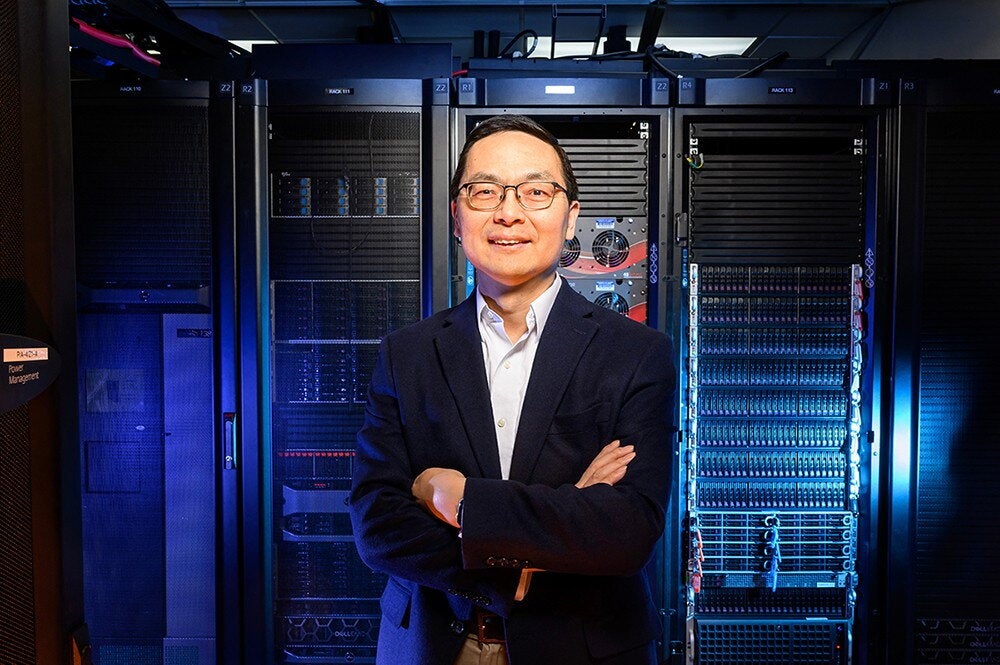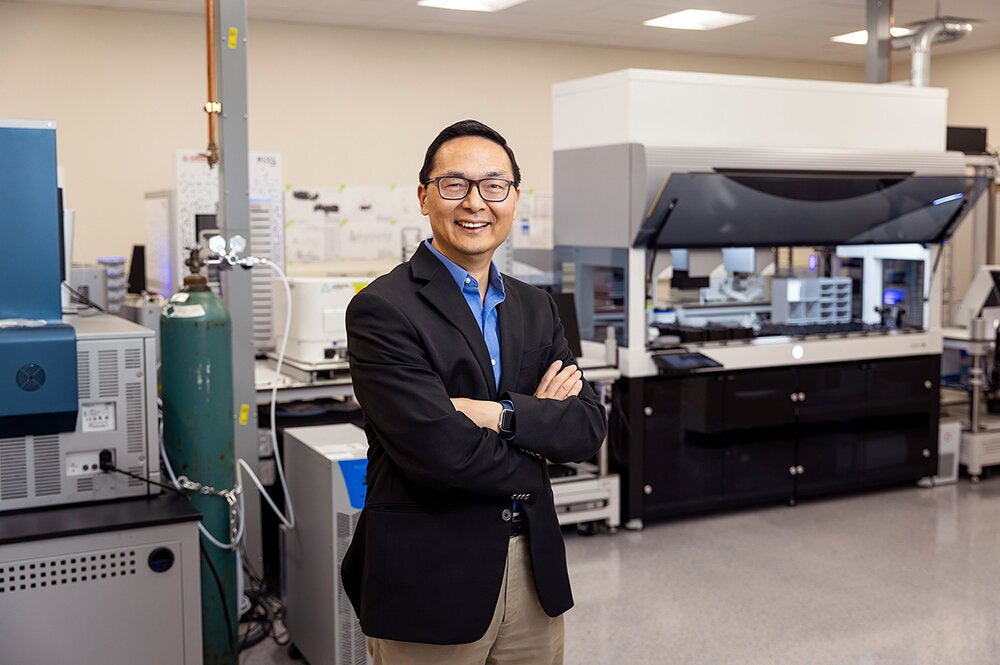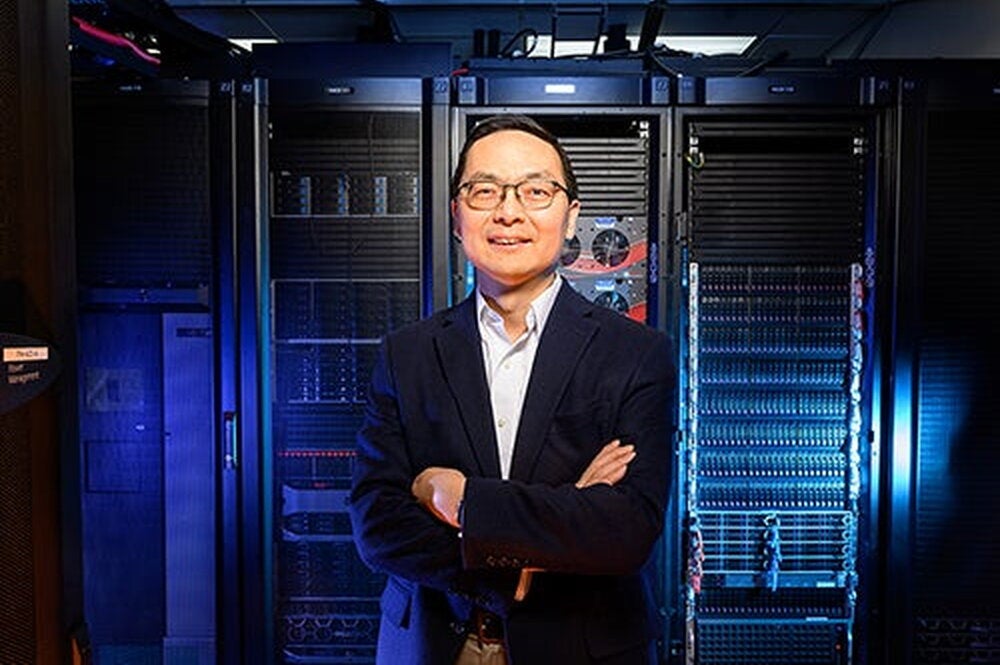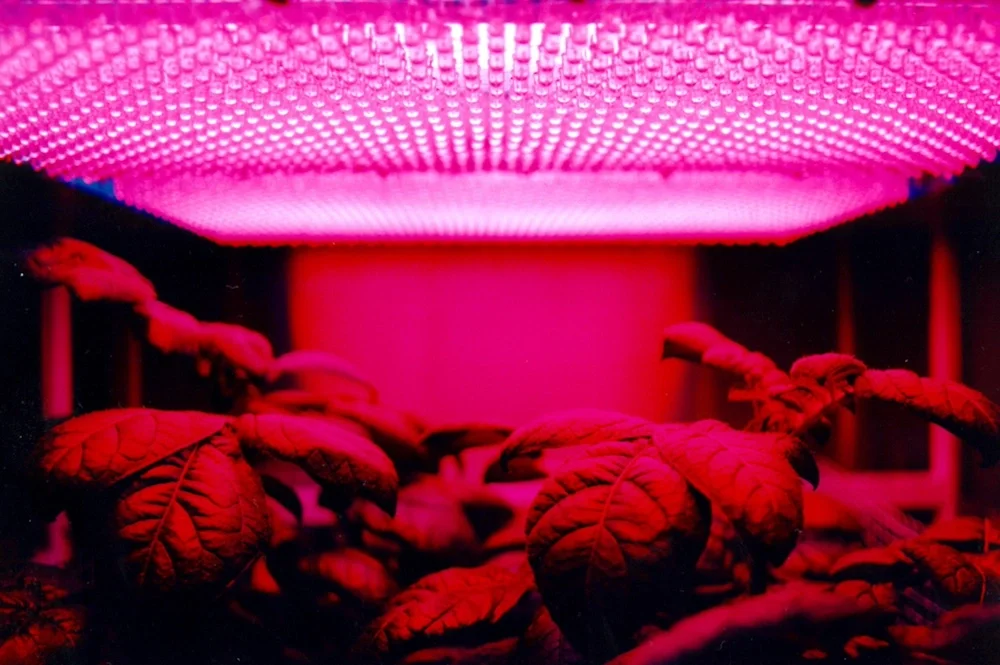
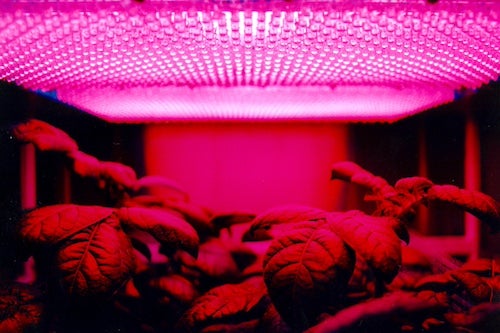
New, highly stretchable sensors can monitor and transmit plant growth information without human intervention, report University of Illinois Urbana-Champaign researchers in the journal Device.
The polymer sensors are resilient to humidity and temperature, can stretch over 400 percent while remaining attached to a plant as it grows and send a wireless signal to a remote monitoring location, said chemical and biomolecular engineering professor Ying Diao, who led the study with plant biology professor and department head Andrew Leakey.
The study details some of the early results of a NASA grant awarded to Diao to investigate how wearable printed electronics will be used to make farming possible in space.
“This work is motivated by the needs of astronauts to grow vegetables sustainably while they are on long missions,” she said.
Diao’s team approached this project using an Earth-based laboratory to create a highly dependable, stretchable electronic device – and its development did not come easily, she said.
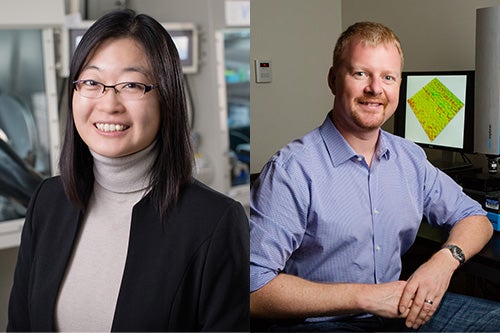
“Honestly, we began this work thinking that this task would only take a few months to perfect. However, we quickly realized that our polymer was too rigid,” said Siqing Wang, a graduate student and first author of the study. “We had to reformulate a lot of the components to make them more soft and stretchable and adjust our printing method to control the assembly of the microstructures inside the device so that they did not form large crystals during the printing and curing process.”
The team landed on a very thin film device that helps restrain the crystal growth during assembly and printing.
“After addressing the stretchability and assembly issues, we had to tackle the problems that come with working with wearable electronics in high humidity and under rapid growth rates,” Wang said. “We needed reproducible results so we could not have the sensors fall off or electronically fail during the growth experiments. We finally came up with a seamless electrode and interface that was not affected by the demanding conditions.”
The ‘Stretchable-Polymer-Electronics-based Autonomous Remote Strain Sensor,’ or SPEARS2 – is the product of three years of hard work, proving that applied science rarely experiences eureka moments.
“It is an exciting technical advance in our ability to perform precise, noninvasive measurements of plant growth in real-time. I look forward to seeing how it can complement the latest tools for interrogating genomic and cellular processes,” Leakey said.
Diao also said she is excited to uncover all of the ways this research will continue to progress.
For example, this study looks at plants like corn that grow primarily upward. However, the researchers plan to advance their electronics printing methodology to create a system that can monitor upward and outward growth.
The team said they are also working toward the ability to sense and monitor chemical processes remotely.
“I think the wearable electronics research community has ignored plants for too long,” Diao said. “We know that they are experiencing a lot of stress during climate adaptation, and I think soft electronics can play a bigger role in advancing our understanding so we can ensure that plants are healthy, happy and sustainable in the future – whether that is in space, on other planets or right here on Earth.”
Researchers at NASA and Illinois researchers from bioengineering, crop sciences, material science and engineering, the Carl R. Woese Institute for Genomic Biology and the Beckman Institute for Advanced Science and Technology contributed to this study.
NASA and Beckman supported this study.
